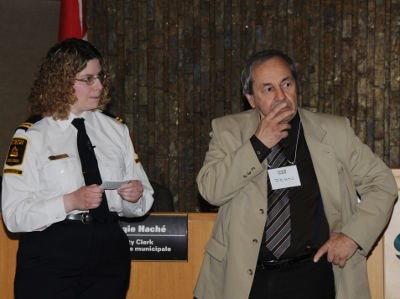Lively District Secondary School students went head-to-head in a game of Emergency Preparedness Family Feud with City councillors, Mayor John Rodriguez and Deputy Police Chief Al Lekun inside council chambers April 30.
The questions tested everyone's emergency preparedness skills, and kicked off Emergency Preparedness Week, held May 2-8. Emergency Preparedness Week is coordinated by Public Safety Canada.
Students each received an emergency preparedness kit.
People should have an emergency kit on hand with items such as water, food, extra keys, radio, first aid kit, whistle, flashlight, cash and an emergency plan.
For more information, or to take the Emergency Preparedness Challenge at www.ontario.ca/beprepared.
Emergency preparedness kits
A major emergency, such as earthquakes or floods, means emergency staff will be busy helping people in the most urgent need. People should be prepared and able to manage for 72 hours on their own before help can arrive, explained a press release from Public Safety Canada.
A basic emergency kit should have water, two litres per person, per day. According to the Public Safety Canada, they should be in small, easily transportable bottles in case of an evacuation order.
Food that won't spoil, such as canned food, energy bars and dried food, should also be in the kit. It's important, however, to replace food and water after a year, if it hasn't been used.
The kit should also have a manual can opener, flashlight and extra batteries, a battery-powered or wind-up radio, a first aid kit, and extra keys to vehicles and home.
A special needs kit should be assembled based on a person's requirements. For example, a special needs kit may have medicine, baby formula, diapers, or equipment for individuals with special needs.
Having a small amount of money in the emergency kit isn't a bad idea, either. Smaller bills, like $10, and quarters for payphones can be extremely handy.
Most importantly, every emergency preparedness kit should include a copy of the emergency plan as well as important documents like birth certificate, health card, driver's licence and birth certificate.
Emergency preparedness kits can be purchased pre-made from the Canadian Red Cross at www.redcross.ca. St. John Ambulance and the Salvation Army have also jointly prepared an emergency kit, which can be purchased across Canada.
